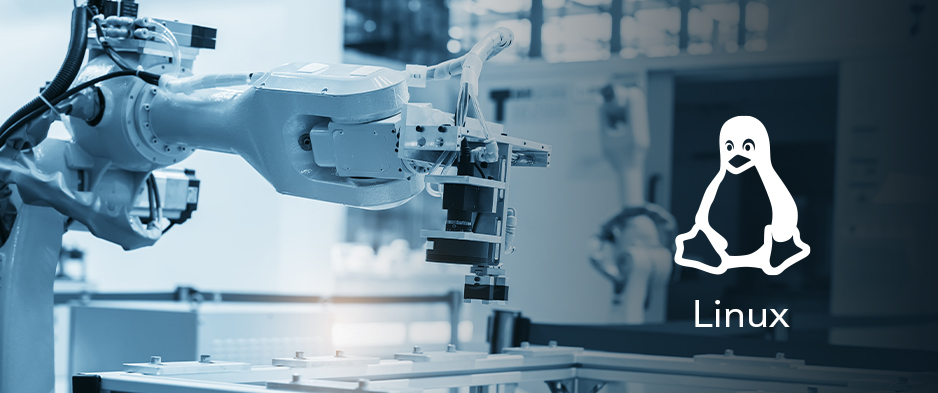Linux has become the most popular operating system for embedded systems and is often considered by software developers to be the favorite environment in industrial automation and robotics, to the point of almost completely replacing Windows CE.
What made it the default solution in this industry? In the first place, advantages such as greater openness and configurability, which meet the needs of flexibility and scalability typical of Industry 4.0. Also, the availability of drivers and software components, as well as real time extensions that allow cycle times of around one millisecond without jittering.
Let’s see Linux’s main features as an operating system in automation and robotics.
Linux and the advantages of open source in automation
Open source is of fundamental importance for Industry 4.0 and the IoT. The openness allows to minimize development costs and risks, and above all increases production flexibility.
In automation, production lines have very high levels of complexity and therefore require extremely flexible control systems. This is where Linux open source comes in handy. Thanks to the free availability and adaptability of the code, developers can overcome the limits imposed by closed systems.
In particular, it is no longer necessary to make adjustments (often expensive and complex) based on the processing or batch size. Linux open source code can be easily modified, without high costs. This also guarantees greater competitiveness.
Furthermore, the open source-based openness enables new approaches and ways of thinking, with the opportunity to find more efficient and versatile solutions.
Security and reliability
Openness, configurability, and flexibility aren’t the only reasons Linux is the best operating system in industrial automation and robotics. It is also a matter of security and reliability.
In recent years, cyber attacks on process control systems have become increasingly frequent. Jonathan Gross, vice president of the IT consulting firm Pemeco, said Windows operating systems are about twice as susceptible to hacker attacks than Linux. Additionally, an attack on a Windows operating system can potentially cause more widespread damage than a similar attack on a Linux system.
According to Gross, “Currently, security, stability and reliability make Linux the operating system of choice to support many web-server applications. With the increasing tendency to develop SCADA and control systems in web-based environments, it only makes sense that end-users will strongly consider Linux-based operating platforms.”
Furthermore, Linux has other advantages that make it more stable and reliable. For example, it crashes less frequently and is easy to update without the need for a system reset. Which translates into less downtime and downtime and higher levels of productivity.
FIND OUT MORE ABOUT CYBERSECURITY FOR SCADA, PLC, HMI CONTROL SYSTEMS

